While our famous British wizard Newt Scamander arrived in New York City in 1926 with a suitcase of magical beasts and fantastic creatures, many of our friends from the roaring 1920s donned the most popular spectacles style and historical vintage prescription glasses during that time: the round frames.
Could it be coincidental that Harry Potter, hailed hero in the wizardry world and fictional protagonist from J.K. Rowling’s fantasy series, also dons these same round styled spectacles? We think not!
Harry Potter’s spectacles are certainly special. After all, without his glasses, young Harry wouldn’t be able to see too clearly. Blurry vision impedes a fiery fight against Death Eaters or a brave battle against He-Who-Must-Not-Be-Named. So an important question remains: how does Mr. Potter’s glasses work?
Ladies and gentlemen, wizard, Muggle, or No-Maj, hop on board. Let’s learn about the lens of glasses and the fantastic physics behind them.
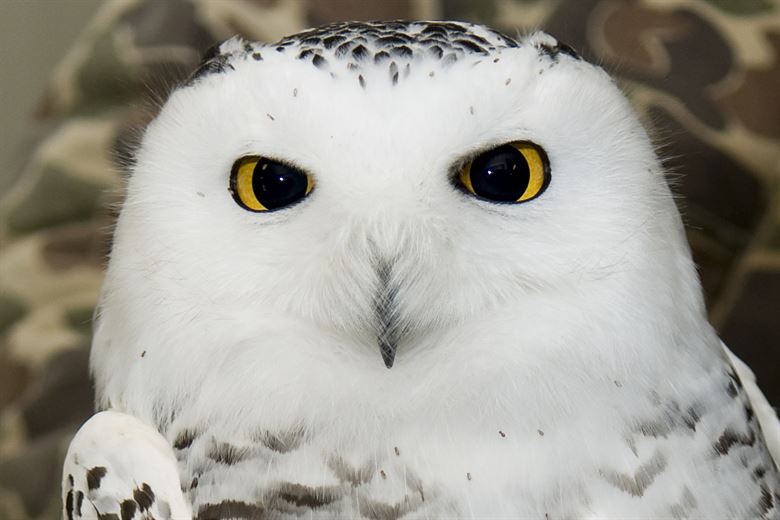
********************************************************************************
Table of Contents:
-
What are Lens?
-
Concave Vs. Convex Lens
-
Mathematics Behind Lens: The Thin Lens Equation
-
How do we calculate with the Thin Lens Equation?
-
Magnified Image? Bigger or smaller?
-
Quidditch Quiz Time: Problem Solving
-
Physics Simulation: Image Projection with Concave and Convex
********************************************************************************
1. What are Lens?
Lens are pieces of glasses that have curved surfaces, and when light strikes the surface, light rays either converge or diverge to form an image. Lens can include our glasses or even those on our cameras.
2. Concave vs. Convex Lens:

Two common types are concave and convex lens. Concave and convex lens are shaped differently, and depending on where an object is placed in front of the lens, different images (varying sizes, upside down, etc) can be projected. Concave lens are thinner in the middle, and when light rays hit it, the rays diverge. Concave lens, also known as diverging lens, are often used to correct nearsightedness. Convex lens, on the hand, are thicker in the middle, and when light rays hit it, the rays converge. These lens are also known as converging lens and are used to correct farsightedness.
Concave Lens = thin in middle = diverging lens = corrects nearsightedness
Convex Lens = thick in middle = converging lens = corrects farsightedness
3. Magical Mathematics Behind Lens:

While the magic behind wizardry and witchcraft does not exist, the magic behind mathematics does. The most famous equation that underlies the mathematics and physics of lens is the Thin Lens Equation:
1/f = 1/i + 1/o
Remember this:
1) f is focal length.
2) i is image distance.
3) o is object distance.
4. How Do We Calculate with the Thin Lens Equation?
An important thing to remember is that the object distance for both lens and mirrors is always a positive value. The image distance or i value in the thin lens equation may be negative or positive depending on the position of the image. If the image is on the same side as the object, in which we note as in front of the lens, then the image distance i value is negative (-). If the image is on the opposite side as the object, in which we note as behind the lens, then the image distance i value is positive.
For Lens: Images on the same side as the object are also known as virtual images. The i value is always negative.
Images on the opposite side of the object are also known as real images. The i value is always positive.
For mirrors: This is the opposite. Images on the same side as the object are real images.
Images on the opposite side of the object are virtual images.
Please note that we are referring to a general equation of 1/f = 1/i + 1/o that is used for both diverging and converging lens, in which our Summary Table below applies. Some people like to use two equations, depending on which lens they use. You may have used 1/f=1/o + 1/i for just convex or converging lens, and -(1/f) = 1/o – (1/i) for just concave or diverging lens. In that case, for concave or diverging lens, you no longer have to pay attention the sign values, and simply plug in the numerical values for focal length, object distance, and image distance.
| Type of Lens | Object Distance (o) | Image Distance (i) | Focal Length (f) |
| Concave Lens (Diverging Lens) | Always Positive (+) if on same side as light entering lens | In front of the lens = Virtual Image = Negative Value (-)
Behind the lens = Real Image = Positive Value (+) | Always Negative (-) (Remember: The f value of diverging lens is always negative.) |
| Convex Lens (Converging Lens) | Always Positive (+) if on same side as light entering lens | In front of the lens = Virtual Image = Negative Value (-)
Behind the lens = Real Image = Positive Value (+) | Always Positive (+)
(Remember: The f value of converging lens is always positive.) |
| Copyright 2018: Moosmosis.org |
5. How Do I Know if a Lens Image is Magnified or Not, upside down or upright?
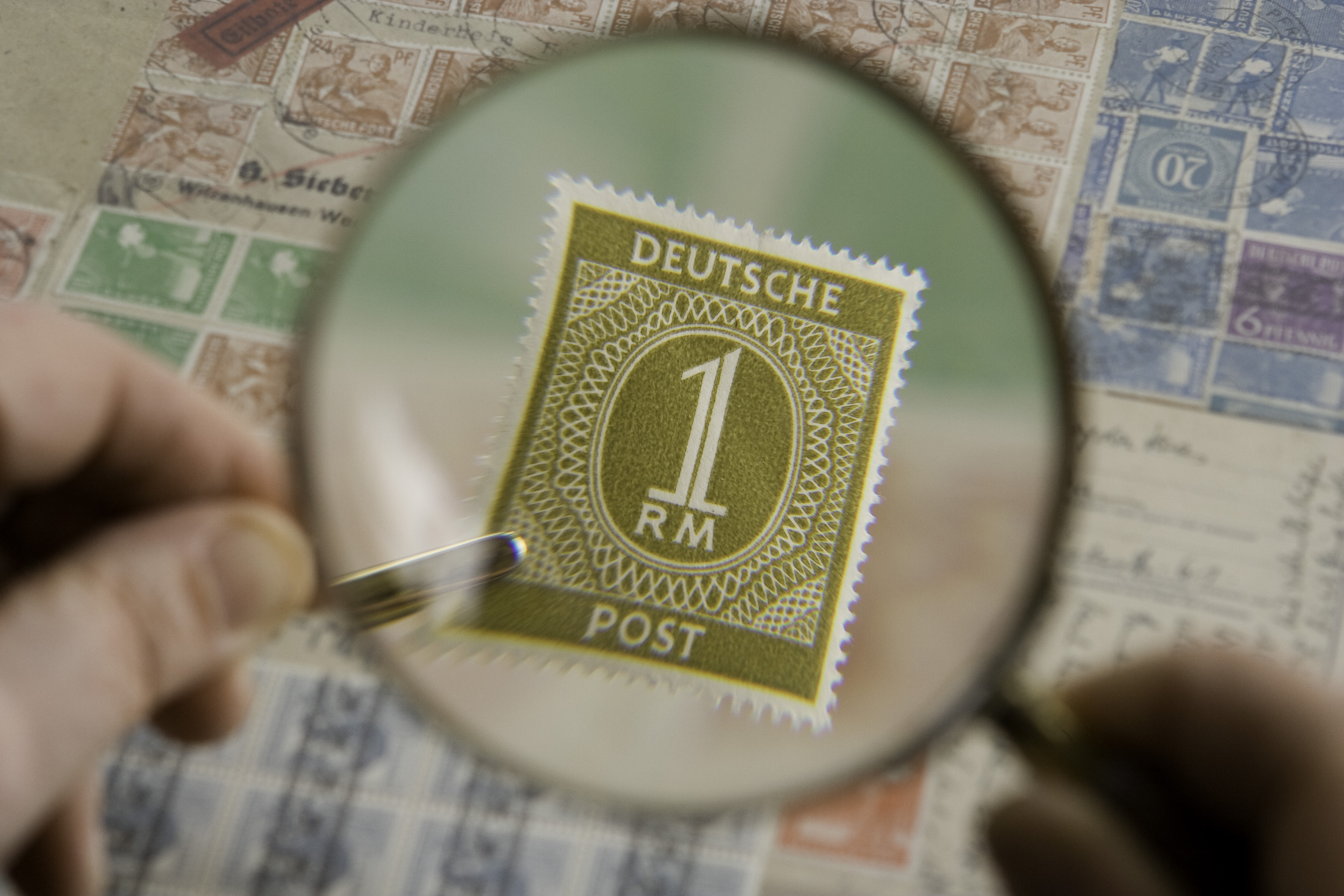
The magnification equation is m = – i/o
If the m value is negative, the image is upside down. If the m value is positive, the image is upright side up.
Now, how do we know if the lens image is magnified, bigger or smaller, based on the thin lens equation? Good question. Plug in your i and o values, and take the absolute value.
m= | – i/o |
If the absolute m value is greater than 1, then the image is larger than the size of the object.
If the absolute m value is equal to 1, the image size is the same size as the object.
If the absolute m value is less than 1, then the image is smaller than the size of the original object.
6. Quidditch Quiz Time!
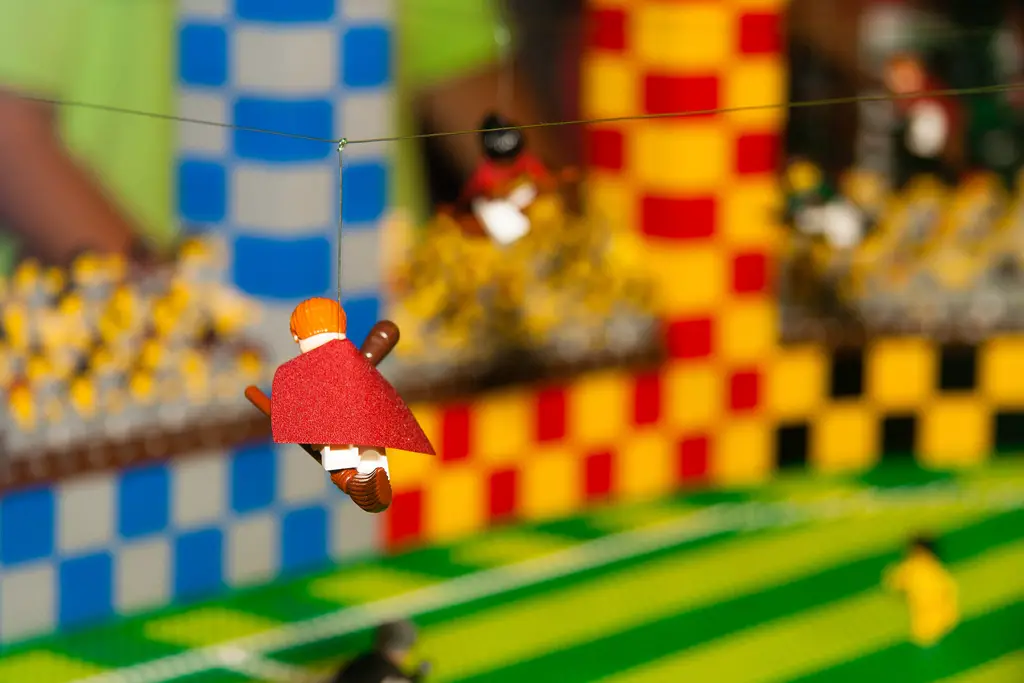
Let’s solve a wizardry and hypothetical example together:
Draco Malfoy and his cronies are back at it again. Running into the Slytherin gang, Harry Potter and his friend Ron defend themselves with flying spells and swinging wands. Malfoy shouts out “Everte Statum,” and the spell catches right into Potter’s chest. Thrown off his feet backwards, Harry skitters across the Hogwarts grass several feet. His spectacles falls off his face, and he loses his wand.
After a heated battle of flying spells, our half-giant half-human Hagrid butts in to save the day. Hagrid manages to separate Harry and Ron from Malfoy and his gang.
Squinting, Harry notices a giant hazy form walking towards him. As the man gets closer, Harry can see the man’s features more clearly – Hagrid’s classic brown beard and furry jacket.
1) Is Harry near-sighted or far-sighted? Based on the two most common lens type, what type of lens does Harry’s spectacles likely have – concave or convex lens?
Answer: Harry is near-sighted! He can see objects more clearly when they are closer to him. In this case, Harry recognized Hagrid’s face more clearly when the half-giant walked closer to the young Gryffindor. As for the lens type, since Harry is near-sighted, it is likely his spectacles holds concave or diverging lens. For people with near-sightedness or myopia, images from the object are focused in front of the retina. Concave lens for Mr. Potter can help correct image distance, and bring the image farther and onto the proper retina area.
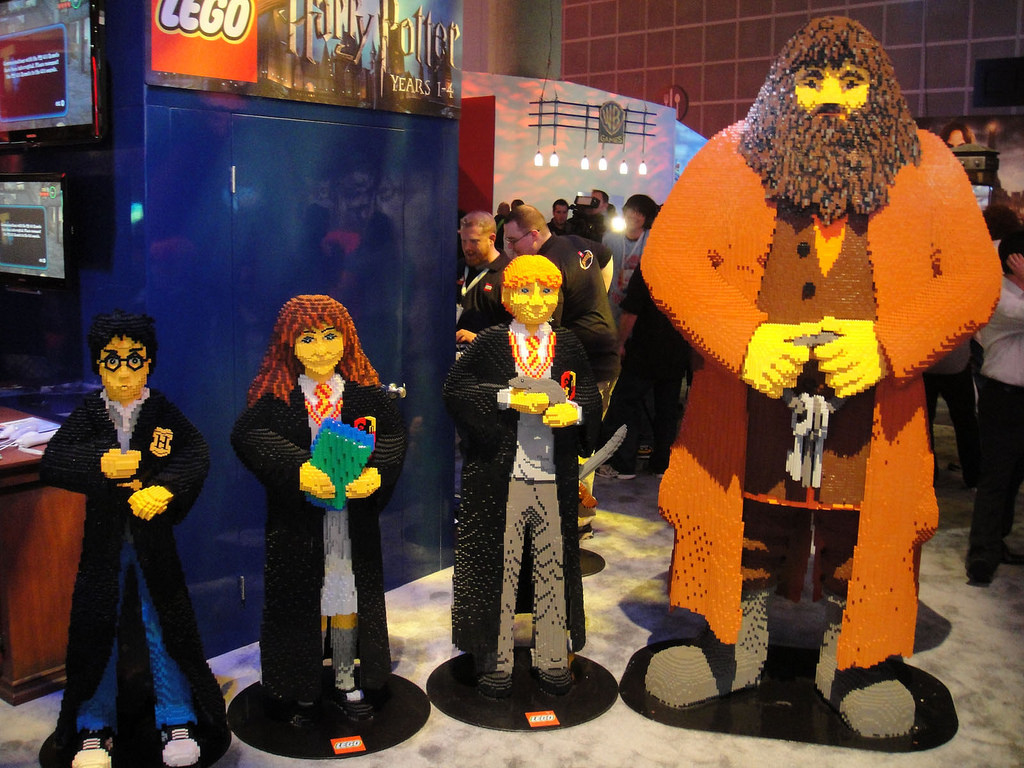
2) Lens to retina distance is also known as the image distance. Picking up the boy’s fallen wand, Hagrid stands 1.o m away from Harry. Harry finds his glasses and puts it on. His lens to retina distance is 2 cm. What is the Strength of Harry’s eyesight?
Answer: Let’s use the Thin Lens equation: 1/f = 1/i + 1/o. The image distance i value is 2 cm. The object distance o value is 1.0 m.
1/f = 1/1 m + 1/0.02 m
1/f = 51/100
Strength, or power, is found mathematically as 1/f in Diopters. Strength is the measurement of the optical power of a lens or curved mirror. https://www.khanacademy.org/science/physics/geometric-optics/lenses/v/diopters-aberration-and-the-human-eye
Thus, the strength S = 51 D.
Wait, but doesn’t Harry wear concave lens? So, shouldn’t f focal length be negative for diverging lens?
Excellent question. Here in this problem, we are discussing a lens to retina distance for the image distance. In reality, without including the eye and only having the object and lens, a virtual image is always produced. The image distance is negative. However, in this case, we include the eye behind the lens and are using a lens to retina distance, which actually produces a ‘real image’ in our retina. The i value is thus positive. Additionally, the f focal length thus refers to the focal length within the eye rather than a focal length in between the lens and object, in which the f value is positive. If this was a regular problem that did not involve the eye, certainly the focal length’s f value for diverging lens would be negative.
7. Physics Simulation: on Image Projection with Concave and Convex Lens
Have a try on our educational physics simulation with lens! This educational simulation, developed by our Moosmosis team member Kenji from Japan, was created via MIT Scratch programming, and projects images based on concave and convex lens.
<Click Here to Play the Physics Simulation>
Instructions:
- Select your lens type, concave or convex lens.
- Press [Space] to project new images.
- The purple stick is your object. The pink dots are your foci points. Move the object by [Right] or [Left]. Move the focus by [Up] or [Down]. You can also move your mouse cursor over the various items to understand what they represent.
- Press [Explain] to retrieve focal length, object distance, and image distance. The physics simulation automatically calculates object distance, image distance, focus distance, and tells whether the image is upside down or not.
- While in the [Explanation] arena, you may press [A] for a more detailed explanation, using similar triangles.
For more about our interactive simulation, check out our special interview with our Moosmosis team member Kenji from Japan here!
If you enjoyed the post, feel free to give us a like, share, or subscribe. Thank you again for visiting Moosmosis, our open-access youth education platform! 😀
Works Cited:
Anatomy Explorer on Eyes and Vision: http://www.innerbody.com/image_nerv10/nerv117.html
Mathematics of Lenses: http://www.physicsclassroom.com/class/refrn/Lesson-5/The-Mathematics-of-Lenses
Optics Calculators: http://www.sciencecalculators.org/optics/lenses/
Thin Lenses and Ray Tracing: https://courses.lumenlearning.com/boundless-physics/chapter/lenses/

Categories: Creative Writing, Educational Game, math, physics, stem

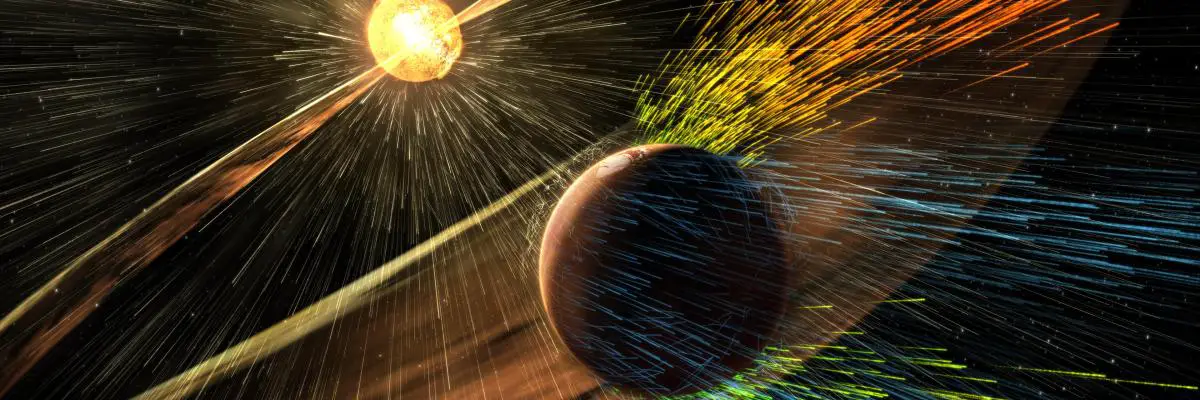






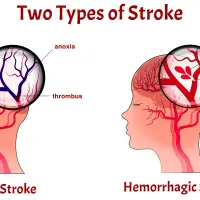



![Central Chemoreceptor vs Peripheral Chemoreceptor in Respiration [Biology, MCAT, USMLE]](https://moosmosis.files.wordpress.com/2022/02/respiratory-control_med.jpeg?w=200&h=200&crop=1)


Hoooo knew physics can be so fun! Haha 😉 I have not touched physics in a couple of years, but this is a good wrap up. As a Muggle, I can attest that Mr. Potter adds a nice touché to these magical mathematical elements. Keep up the work. You and your organization are doing a great thing.
LikeLiked by 1 person
Thank you so much, Samuel! We’re so glad you enjoyed our educational post! We tried to add some spice and wizardry magic in here to engage students, lifelong learners, or anyone interested. It looks like it worked! 😀
LikeLike
Nothing new to me but it’s such amazing way to engage young people, it will surely pay off. A really good blogpost
LikeLiked by 1 person
Thanks for your encouraging comment, geekyisbeautiful! 🙂 By the way, lovely username, you have! Thank you visiting and hope you have a spectacular spring.
LikeLike
Hi there and thanks for the support. This is… Eye opening. Stuff. Informative and well presented with Humor AND Context. As a matter of interest… to me… a Student of the Ninja… Our World Legends say that the Female of Our World sees quicker and better in the Dark than the Male.?. ‘Tis so.?. Or No.?. Thanks in advance.
LikeLike
Fun article! Great things you’re doing with this site!
LikeLiked by 1 person
Thank you Melissa for your nice comment! 🙂 Happy learning!
LikeLike
Excellent article!! Very helpful too!
LikeLiked by 2 people